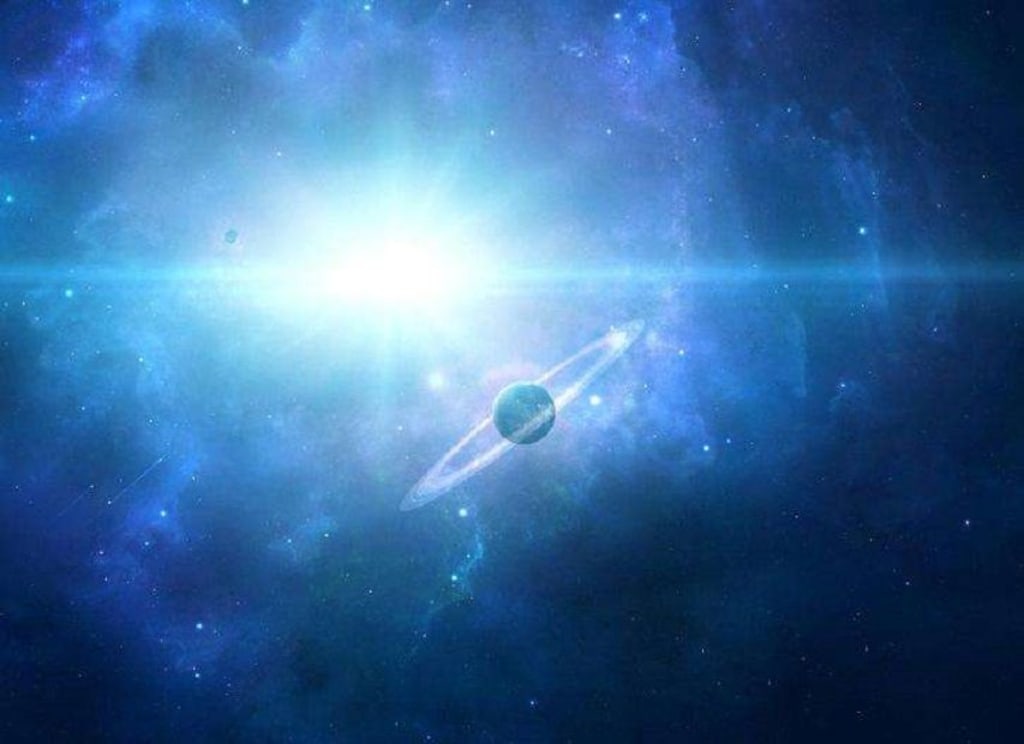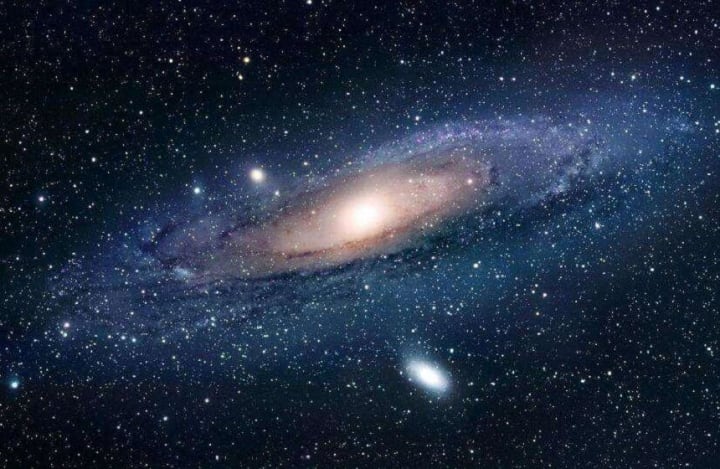
The issue has been debated endlessly.
Some people think that the universe has a boundary, because the largest boundary that Hubble can see is about 92 billion light years, which should be the limit of the universe.
But there are those who argue that these 92 billion light years can only be called the boundary of the field of view, not the true boundary of the universe.
For example, why the ancients thought the sky was square and the earth was round, because standing on the ground and looking at the distance, they would think that the boundary between the ground and the skyline was the boundary of the earth.
Actually, that's just what the human eye sees. Similarly, the Hubble Space Telescope uses optics, so there will be a "look" limit.
And to find out, we've been looking at a lot of things, whether there's a boundary.
Discussion of boundary
As to how the universe was born, most scientists favor the Big Bang theory that the universe was created by the explosion of a singular point.
If so, then the boundaries of the universe would have to depend on the shape of the universe.
If the universe is a sphere, then the universe is bounded; If the universe were bell-shaped or trumpet-shaped, there would be no boundary in one direction or the other.
It's like a ray that starts at one point and goes on forever.
We may be able to find that point, but we'll never find the other point.

In theory, you could find the start of the explosion, but we've never been able to find the end.
But space is created by the expansion of the universe, and only the expansion to the place where there is space. Another sign that the universe has a boundary, but we can't see it, is expansion.
n optical telescope, Hubble can only see light where it goes.
And the 92 billion light years it sees, that just means the light got there. Beyond the observable, not because there is no place, but light has not gone.
If the universe expands faster than the speed of light, then light can never catch up with the boundaries of the universe, and human eyes will always be one step behind the true boundaries.
At this point, the question of the boundaries of the universe becomes paradoxical, because what Hubble sees, not all of it, can only be called the "visible universe."
The invisible universe never knows where its boundary is, so to some extent, the universe has an edge but no boundary.
The only way to prove the limits of the universe is to keep up with the expansion of the universe, to the very edge of the expansion, and to know if there is a limit.
It's important to note that the Big Bang is only one hypothesis for the origin of the universe, and time and space are not necessarily created by the explosion.
I'm afraid that the limits of the universe will become an unsolved mystery, along with the existence of the universe.
Zoom in the universe
When you look at the universe at the scale of a billion light years, and you take a picture of it a billion light years away, you see dark space, sparse points of light, some of them bright, some of them dark.
At this point, when we zoom in on the image and scale it to 1 billion light years, there will be an area where there will be dense spots of light.
They seem to form a system, "close" together, next to them, still sparse light points.
Further zooming in, to a scale of 1:10 million light years, we can see even brighter spots in space, not individual stars, but individual galaxies, including our own Milky Way.
When the scale is scaled up to 1:1 million light-years, we can see the outline of the Milky Way galaxy appearing in the picture.
The Milky Way at this point takes up about one-tenth of the picture.
At 1:100, 000 light-years, the Milky Way takes up the whole picture, and we can clearly see its spiral arms and rings.
This is our Milky Way galaxy, which is about 100,000 light-years across.
If we zoom in further, to a ratio of 1:10,000 light years, we see that the whole picture is filled with dots, which are stars in the Milky Way.

Our solar system is one of them, and finding it is like looking for a needle in a haystack.
At this time, you need to magnify the solar system much more quickly.
We can just scale it up to 1:100 billion kilometers, and we can see that the outline of the solar system is already there, and the solar system at this time looks like the Milky Way at 1:1 million light years.
When the scale is scaled up to 1:1 billion kilometers, the entire solar system will be visible, with all eight planets, asteroids, the Kuiper Belt, and more.
At 1 billion miles, the Earth appears in the picture, and if we zoom in, we can see the Earth's landscape, the light, and even the people on it.
And here, we can look at another kind of picture -- a zoom-in of life.

If you think about it, it's scary. We always talk about leaving the Earth to achieve interstellar migration, so how do we break the shackles of the Earth to us?
If we go to live on another planet, it's like mitochondrial DNA leaving the body and going to other organisms.
It might be a plant or even a prokaryote, some of which don't need mitochondria at all.
In the 1980s, scientists set up a "Biosphere 2" in the desert in a failed attempt to mimic Earth's ecology.
The experiment tells us how important the earth is for human beings. The earth can live without human beings, but human beings cannot live without the earth.

So is the boundary of the universe really that important?





Comments
There are no comments for this story
Be the first to respond and start the conversation.